
OBJECTIVE OF CLAIM 2: Capture the majority of at least three factions to win the game
NUMBER OF PLAYERS: 2- 4 players
CONTENTS: 52 cards
TYPE OF GAME: Trick Taking Card Game
AUDIENCE: Ages 10+
INTRODUCTION OF CLAIM 2
Claim 2 is a sequel to the German Whist based Claim. In this continuation of the game, five new factions are introduced: Gnomes, Giants, Dragons, Trolls, and Seers. Each faction has its own special power that affects the game.
Although the 2 player game is exactly the same as the original Claim, Claim 2 includes directions for a 3 and 4 player variant which will be described below. There are also directions for modifying the deck using other factions from Claim in a 2 player game which are included below.
CONTENTS
A 52 card deck is included that contains five suits. There are 13 Gnomes, 9 Giants, 10 Dragons, 10 Trolls, and 10 Seers. Two player reference cards are also included in the game.
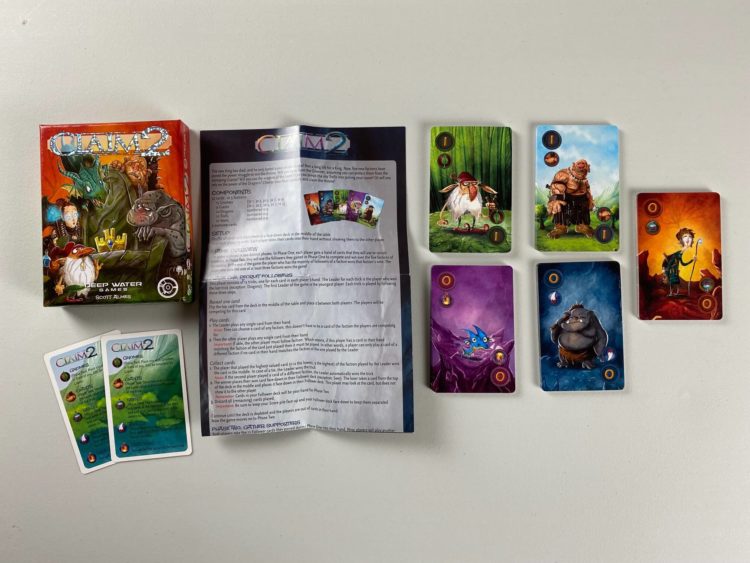
FACTION POWERS
GNOMES
Gnomes can earn a player many points during Phase Two, but they are easily squished by a Giant if the player is not careful. Any Gnomes captured during Phase Two are placed face up in front of the player who captured them instead of the Score Pile. Only at the end of the game can Gnomes that are kept alive be added to the Score Pile.
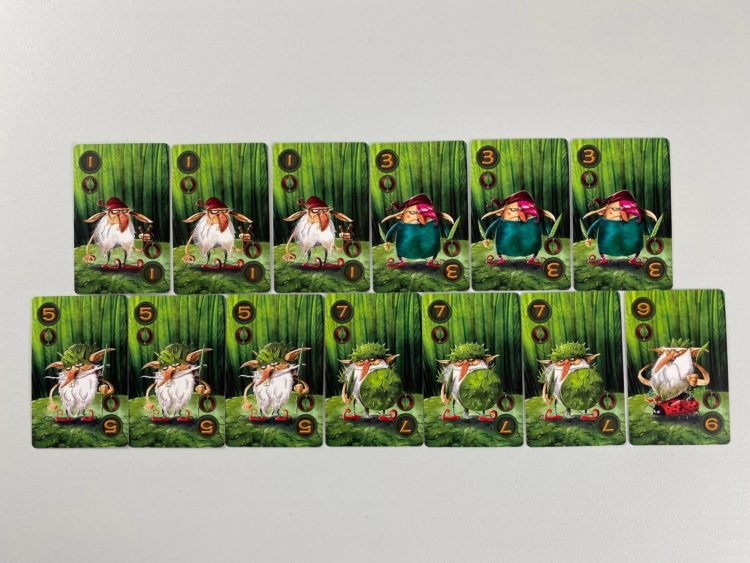
GIANTS
During Phase Two, capturing a Giant allows that player to smash an opponent’s Gnome of the same value. The Giant goes into the player’s score pile, and their opponent’s Gnome is discarded from the game.
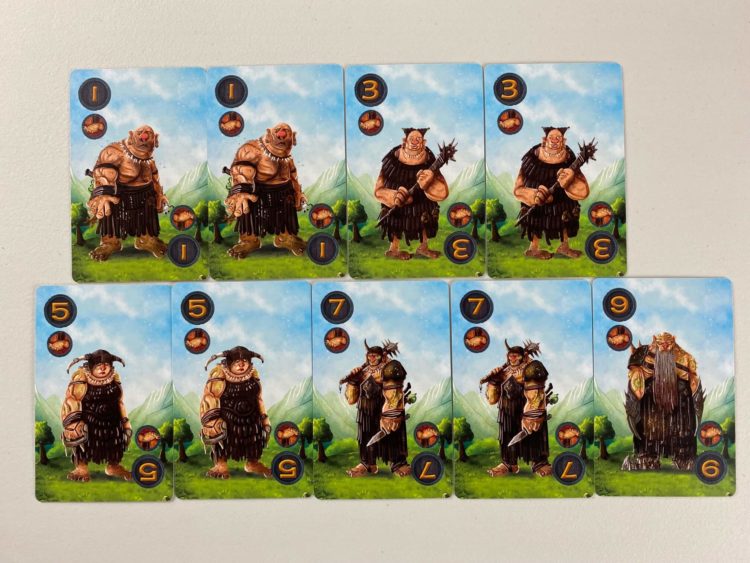
For example, if a Giant 5 wins the trick, that player may smash their opponent’s Gnome 5 if they have it. If the player does not have a Gnome of the same value, the Giant is added to the score pile and nothing else happens. If a player wins a trick with two Giants in it, they are allowed to smash two of their opponent’s captured Gnomes if they can. Remember, the Gnome must be the exact same rank as the Giant in order to be smashed.
DRAGONS
When a Dragon is played last to a trick, that player automatically leads the next trick regardless of the outcome. For example: Tommy leads the trick with a Gnome 5. Willy cannot follow suit, so he plays a Dragon 1. Tommy wins the trick, but Willy leads the next one.
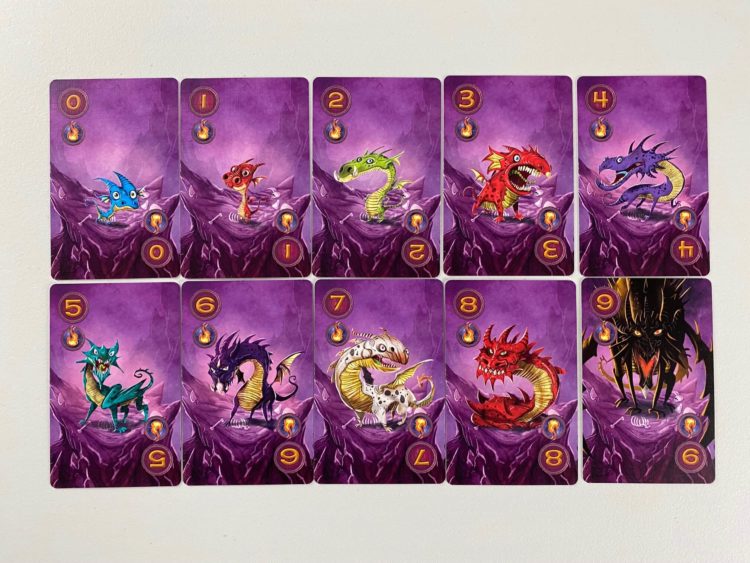
If two Dragons are played to the trick, the player of the second Dragon will lead the next trick regardless of who wins it.
TROLLS
During Phase 2, only one Troll can be added to a player’s Score Pile at a time. If a trick contains more than one Troll, the lower ranking Troll is set aside to be collected with the next trick. The winner of the next trick also gets to capture that Troll.
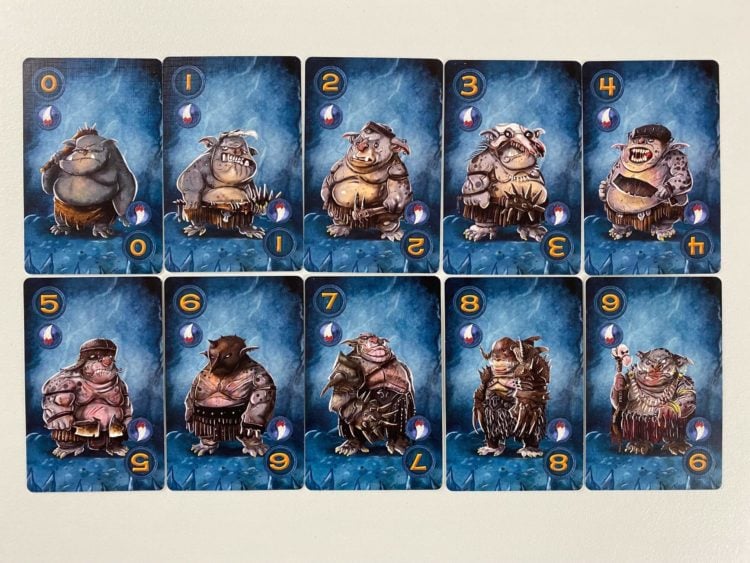
It is possible for more than one Troll to be waiting in line for capture. If this occurs, the waiting Trolls are captured one trick at a time. For example: During trick 1, Tommy leads with a Troll 1, and Willy follows with a Troll 3. Willy wins the trick and collects the Troll 3 for his score pile. The Troll 1 card is placed aside. Willy leads the next trick with Troll 9, and Tommy follows with Troll 7. Willy wins the trick, adds the Troll 9 to his Score Pile, and paces the Troll 7 in line with the Troll 1. Both of those cards stay off to the side because only one Troll can be added to the Score Pile per trick. Willy leads the next trick with a Gnome 5, and Tommy follows with a Gnome 3. Willy wins the trick AND collects the Troll 1. The Troll 7 is still waiting to be collected.
SEERS
The Seers’ power only goes into effect during Phase 1. If a player wins the trick with a Seer, that player may peek at the top card of the draw pile. If they want, they may take that card instead of the face-up card. If that player chooses to take the top card after peeking, their opponent takes the face-up card.
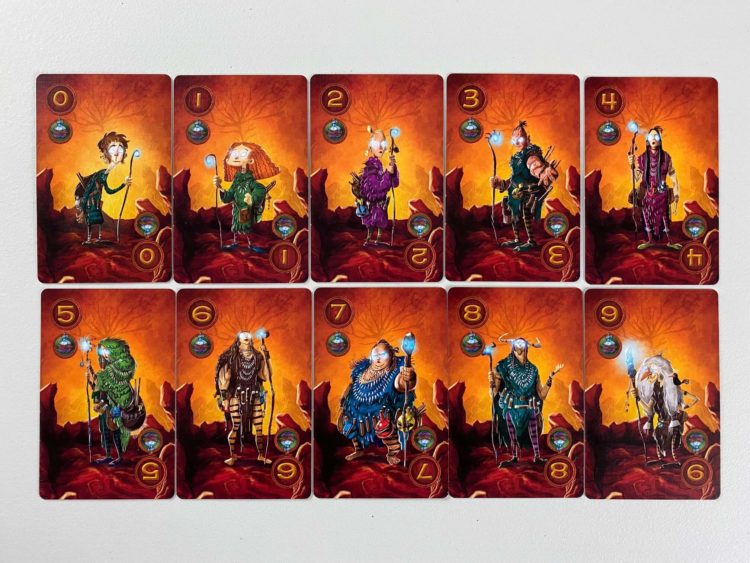
COMBINING FACTIONS
When combining factions from Claim and Claim 2, some rules must be followed to keep the game balanced and fun.
The deck can only contain 5 factions. It must include either the Knights & Goblins from Claim or the Gnomes & Giants from Claim 2. Select three other factions from either game and place the rest of the cards back in their boxes.
3 AND 4 PLAYER GAMES
Playing the game with 3 or 4 players requires 7 factions. Two of the factions must be either the Knights & Goblins or the Gnomes & Giants. Only one of these sets can be included. Then choose five other factions to include. Place all other factions back in their boxes.
SETUP
For a 3 player game, shuffle and deal 12 cards to each player. In a 4 player game, each player is dealt 9 cards. The rest of the cards are placed face down as a draw pile.
In a 4 player game, players are on teams. Partners sit across from each other at the table.
PLAY
Turn the top two cards of the draw pile over. The youngest player leads the first trick. Whatever faction that player leads should be followed by the rest of the players if possible unless a faction’s power allows otherwise.
The highest number in the lead faction wins the trick. That player takes one of the face-up cards and adds it to their Follower Pile. The player with the second highest card takes the remaining face-up card. The player with the third highest card draws from the draw pile. Finally, the last player also draws from the draw pile.
When cards that do not follow the lead faction are played to the trick, the ordering of cards is determined by rank. All ties are broken and won by the player who played the card first.
Once each player has taken a card for their Follower Pile, the trick is discarded. Turn over two more cards from the draw pile, and the trick-winner leads.
Remember, faction powers might affect who wins the trick and which card a player may take during Phase 1.
During Phase 2, the trick-winner collects all of the cards from the trick and adds them to their Score Pile unless a faction’s power goes into effect.
SCORING & WINNING
In a game with 3 players, whoever wins the most factions wins the game. If there is a tie, the tied players determine which factions they have the most cards in, and then count up those cards. Whoever has more cards wins the tie. If there is still a tie, each player adds up the total value of the factions they won, and the player with the highest total wins.
In a 4 player game, each team counts up how many cards they have for each faction. The team with the most cards from a faction wins a point for that faction. The team with the most points wins the game.
- TRIPLE SNAKES - February 15, 2021